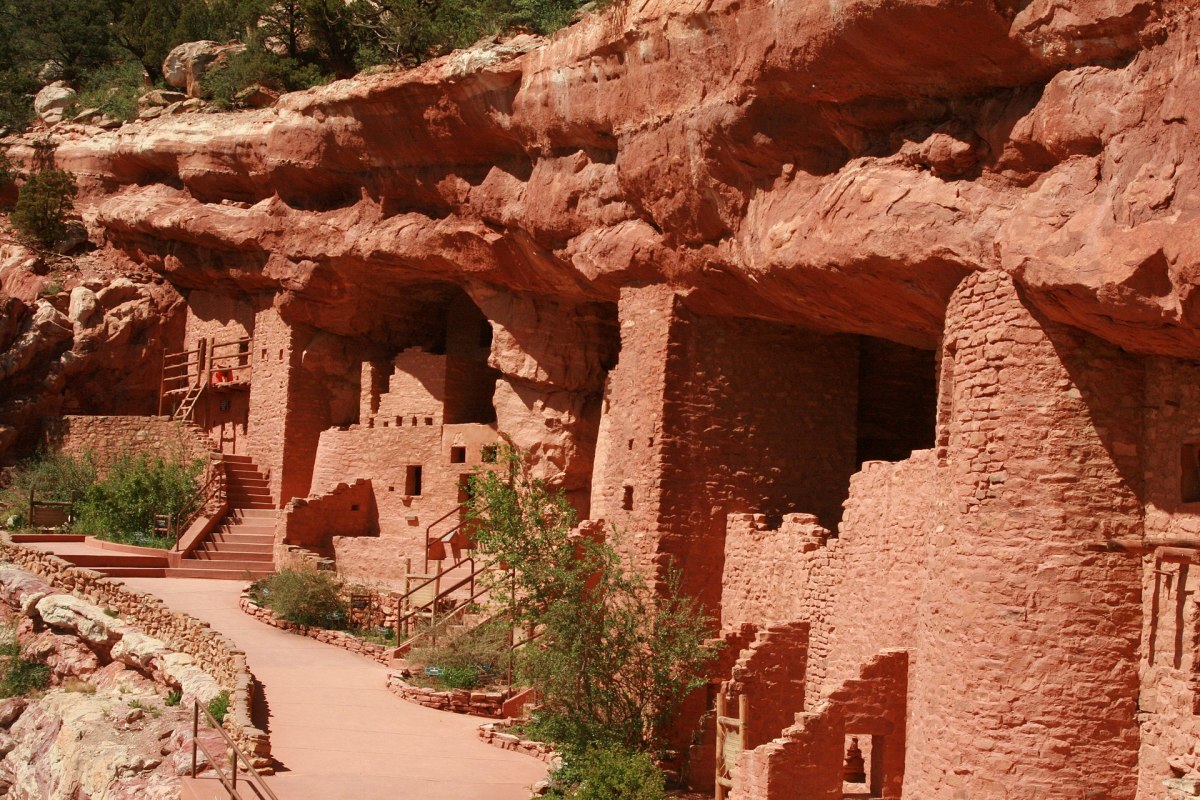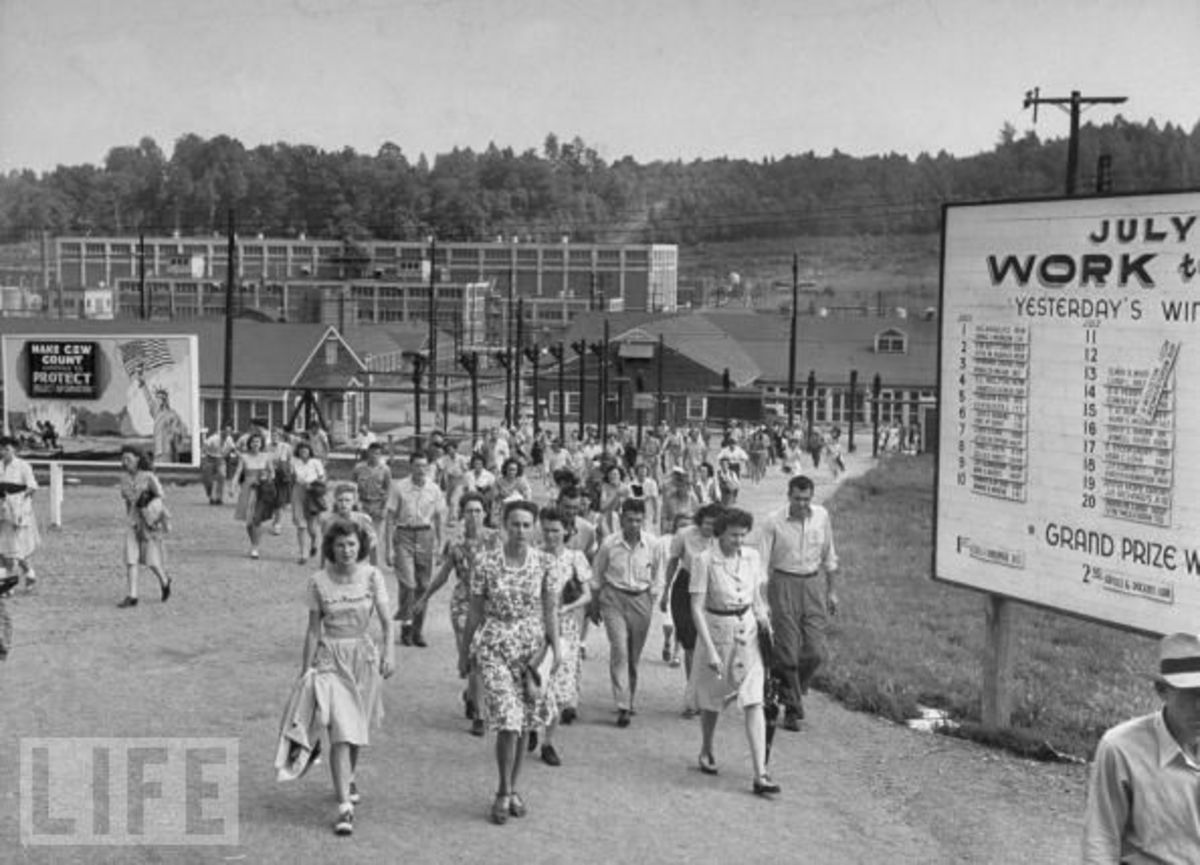The History of the House

Houses Down Through the Ages
People take their houses for granted. They are our caves, dwellings, abodes, homebases and ports in the storm. They offer refuge, tranquility, pride, comfort, energy and love. Sometimes, without giving too much thought to them, folks just don't realize how fortunate they are in having this one physical entity to hang their hats. From man's beginnings, the house has generated safety and support from a dangerous and uncertain world. Where else can one go to grumble the most and get loved the best?!
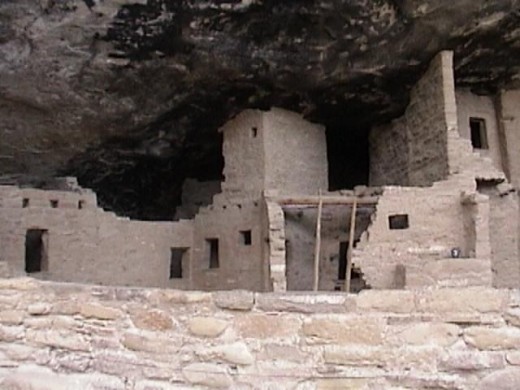
The House in the Beginning
Where did Prehistoric Man Live?
Prehistoric man dwelled in numerous areas around the world in structures ranging from caves used by Neanderthal and Cro-magnon man, to Native American cliff dwellings in Arizona, New Mexico, Colorado and Utah. Remains of prehistoric dwellings can be found in Israel, as well; anywhere, that is, where man set foot thousands of years ago. Man always needed a place of refuge because of his physical frailty as opposed to other more robust and powerful creatures which could trample or gobble him down with ease. Man's superior brain, however, concocted a way to protect himself from the tormenting heat of the day and the frigid nights. By rights, man's hide was thin and naked, it needed help.
Some of man's inventions were ingenius and practicable according to the needs of the areas in which he lived. Cave dwellings, for example, utilized height off the ground and vantage points to forego surprise attacks from animal predators or other humans. Besides, the caves were pretty much readymade for habitation, with only minor renovations necessary for use. On the other hand, Native Americans of the Southwest carved magnificent dwellings out of the rock cliffs in order to fend off enemies, and yet, give themselves an ethereal sense of artistry and pride in doing so. Either way, prehistoric man survived admirably because of his choices in housing.

Dwellings of Ancient Egypt, Mesopotamia, Greece and Rome
Ancient Homes of the Mediterranean and Middle East
Some four thousand years BCE, civilizations arose along the Tigris-Euphrates Rivers and the Nile valleys of Egypt. It took about two thousand years more for these civilizations to construct dwellings perfected to the extent that they offered comfort and amenities for their inhabitants, technology was slower to advance as opposed to Today. The Egyptians and Babylonians, for instance, modeled their homes from clay bricks and ate their meals and slept atop flat roofs. The Babylonians, however, built their homes on brick platforms because of the marshy soil. Each dwelling sported several rooms and had an outside staircase which led to the roof. Stone was plentiful but difficult to cut, hence, only nobles and wealthy citizens could afford to use it.
Civilizations in the Mediterranean regions, such as Greece and Rome utilized similar plans and architecture emanating from Cretan models. In Crete, the houses were made from plentiful stone materials. A home there consisted of a main room, called a megaron, containing a hearth. The women performed their household duties from within. Clay pipes conducted water throughout the dwelling. Greek houses utilized clay bricks and wood, as well as stone. The peristylum was an open court constructed in the better Greek homes. Romans enjoyed using added materials such as glass, granite, lava, marble and stucco in which to build dwellings. An atrium, which was in mostly every Roman structure, had an open roof to let fall rainwater which was captured in a tank below and then used. The Romans also developed a hypocaust, which created hot air coming from ovens underneath the floors and then conducted through pipes to warm the home. The Roman workers, however, were crowded into apartment buildings made from wood, which would be destroyed easily by earthquakes and fires.
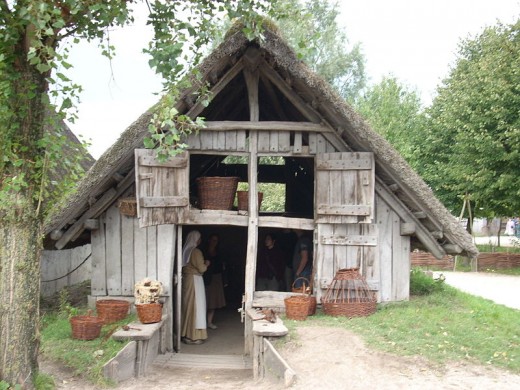
Dwellings of the Middle Ages
The Houses of England
A Saxon family would live in one large room called a heal, or hall. Grassy sod covered a layer of bark that constituted the roof, and a wind's eye, or window was an opening in the center of the roof to allow smoke to escape from a fire used for warmth or cooking, it also let in light and air for ventilation. Later on, English peasants formed homes made from wattle and daub, intertwined branches and sticks held together and covered with clay. Tree trunks and heavy wooden beams comprised the half timber house, which was introduced from the Continent. This house also utilized wattle and daub, but also bricks. Better built ones were of two stories and included a bedroom with work and storage rooms, as well as the main hall.
English nobles built castles of fortified stone to ward off enemy attacks. The castles were surrounded by thick walls and deep trenches called moats, filled with water. The primary room of this structure was the hall. Private rooms including a probable chapel, wine cellar, pantry and kitchen also made up the rest of the building, along with fireplaces constructed into the walls utilizing primitive chimneys. English town houses were also prevalent, with the second stories projecting into the street below. Shops were often operational on the first floors. These structures blocked light and air ciculation but protected the shopkeepers below. After time, poor city dwellers occupied the top floors and laws were passed to make the buildings from stone, tile or slate to prevent fires. In the 1600's, King James I decreed that structures be built with straight lines, hence, the overhanging townhouse became obsolete.
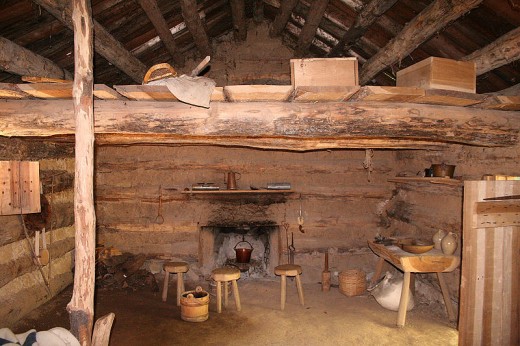
Houses in Colonial Times
Dwellings of the Native Americans and Settlers
Native Americans of the Northeast part of the now United States, resided in many different abodes. Rectangular longhouses and roundhouses were made from bent poles covered with deerskin. The Iroquois used bark shingles to cover their longhouses, while the Penobscot built wigwams covered with birch bark. English settlers in New England built houses quickly in order to save time for planting. They utilized wattle and daub construction along with the half timber model. Later, they applied clapboards for extra insulation while building large fireplaces with a single chimney for cooking and heating. In the South, the settlers used brick as well as wood for construction. As settlers moved west, the log cabin, introduced by German and Swedish colonists, became popular. Most Native Americans of the Great Plains utilized cone-shaped teepees made from poles covered with animal hides.
In the first half of the Nineteenth Century, steam powered machinery manufactured ample supplies of lumber and other building materials such as nails and additional metal products to sell to house builders all over the United States and its Territories. New inventions like the steamship, canals and the railroad brought these goods where needed quickly. Inventors provided new household conveniences, with fireplaces being replaced with coal burning stoves. By the end of the century, central heating was invented with furnaces and radiators. Houses were beginning to take on the modern image.

Houses of Today
Modern Homes Come in Many Types, Shapes and Sizes
Today's homes have multiple rooms, such as, kitchen, dining room, living room, bathroom, bedroom, garage and various storage rooms. Dens, recreation rooms, family rooms, utility rooms and studys are also added into the mix. No longer does the individual have to go outside to the outhouse to find relief, modern plumbing is tantamount to heaven on earth for the homeowner these days. Modern wonders such as electricity, gas and oil heat our homes, cook our food and light the way in the darkness. Modern appliances like washing machines, dryers and dishwashers make house chores so much more manageable and timesaving. We really are lucky to have these homes in the Twenty-First Century!
There also are many different types and shapes of houses from which to choose. There are the colonials, tudors, ranches, cape cods, log homes, split levels, open floor plan, enclosed floor plan, etc., etc., etc. Sizes vary according to taste, geographical locations and ability to afford cost. However, huge homes popular in the 1980's and 1990's are being downsized not only because of expense, but also because of homeowners not having ample time to take care of such large dwellings. Inside decorating constantly changes as well, whereas, a formica countertop was acceptable twenty years ago, today would be considered an eyesore, granite is more popular, by far, and that island in the kitchen is a must! So, there they stand, the dwellings, abodes, pads, caves and digs down through the ages. Relax and enjoy!
The History of Houses Throughout the Ages - Homes for Better or for Worse
The many different wants and needs for house building and home ownership down through the centuries offered and does offer a multitude of challenges to individuals around the world. See how you can access and resolve problems faced in the modern day and also become aware of how people in times past used their dwellings for better or for worse!
Owning a house is one of the biggest rewards and responsibilities a person can have. In America, some view home ownership as a right, others, as a priviledge. Do you take your home for granted, or do you appreciate the fact that your hard work made it all possible?


